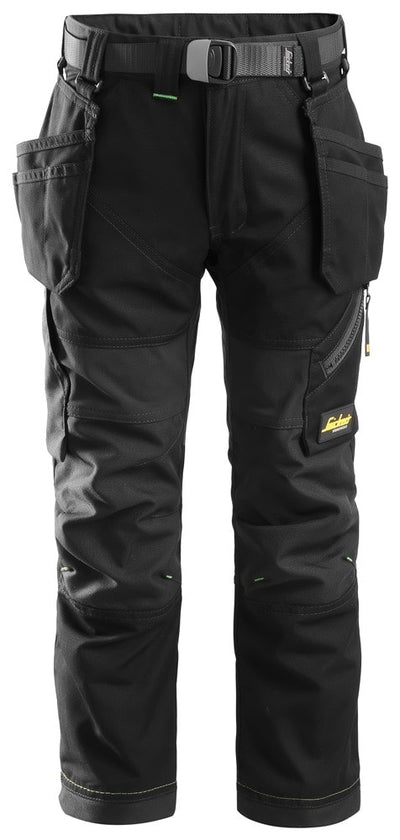Why You’re Wasting Money on the Wrong Hi Vis Workwear – And What to Buy Instead
Understanding Hi Vis Workwear Regulations and Standards
High-visibility (hi-vis) workwear is a crucial element of workplace safety, particularly in industries like construction, logistics, and emergency services. The UK adheres to strict regulations, notably EN ISO 20471, which dictates the necessary levels of visibility for different work environments. Employers are responsible for providing compliant workwear, ensuring workers are visible under all conditions.
The True Cost of Buying the Wrong Hi Vis Gear
Many businesses and individuals waste money on substandard hi-vis clothing without realising the hidden costs:
-
Frequent Replacements: Poor-quality materials wear out quickly.
-
Non-Compliance Fines: Workwear that doesn’t meet safety standards can lead to legal repercussions.
-
Workplace Accidents: Inadequate visibility increases the risk of accidents, leading to medical costs and downtime.
Common Mistakes People Make When Buying Hi Vis Workwear
-
Ignoring Work Environment Needs: Different settings require varying levels of visibility.
-
Choosing the Wrong Fabric: Some materials don’t hold up against harsh weather.
-
Prioritising Price Over Quality: Cheap options often compromise safety and durability.
-
Incorrect Sizing: Poor fit affects comfort and mobility.
How to Choose the Right Hi Vis Workwear for Your Industry
Each industry has specific hi-vis requirements:
-
Construction: Durable, waterproof, and heat-resistant materials.
-
Logistics and Warehousing: Lightweight and breathable fabrics for indoor work.
-
Railway Workers: Rail-compliant orange high-visibility workwear.
-
Emergency Services: High-contrast colours with reflective strips for night visibility.
Key Features to Look for in High-Quality Hi Vis Clothing
-
High Reflectivity: Must meet EN ISO 20471 visibility standards.
-
Breathable and Waterproof Material: Keeps workers comfortable in different climates.
-
Durable Stitching: Reinforced seams for longevity.
-
Adjustable Fit: Ensures ease of movement and versatility.
The Importance of Proper Fit and Comfort
Ill-fitting workwear reduces efficiency and can be a safety hazard. Look for:
-
Elasticated Waistbands & Adjustable Straps: Better fit and flexibility.
-
Layering Considerations: Room for thermals in colder conditions.
-
Ventilated Designs: To reduce overheating in warmer weather.
Fabric Types: What Works Best for Different Work Environments?
| Fabric Type | Best for |
|---|---|
| Polyester | Durability and moisture resistance |
| Cotton Blends | Comfort and breathability |
| Flame-Resistant | High-risk environments like welding |
| Waterproof Material | Outdoor work in rainy conditions |
When and How to Replace Your Hi Vis Gear
Hi-vis clothing doesn’t last forever. Signs it’s time to replace include:
-
Fading Colour: Reduced brightness decreases visibility.
-
Torn or Worn Fabric: Compromises effectiveness.
-
Damaged Reflective Strips: Reduced visibility in low light.
Proper washing techniques can prolong lifespan:
-
Wash in Cold Water: Prevents fading.
-
Avoid Harsh Detergents: Protects reflectivity.
-
Air Dry When Possible: Prevents material breakdown.
The Role of Sustainability in Hi Vis Workwear
Eco-conscious choices are emerging in the hi-vis industry. Consider:
-
Recycled Polyester: Reduces environmental impact.
-
Ethical Manufacturing Practices: Supporting fair wages and sustainable sourcing.
-
Workwear Recycling Programmes: Reducing landfill waste.
Budget vs Premium Hi Vis Workwear: Which One Saves You More?
Cheap hi-vis clothing often means higher long-term costs. A comparison:
| Feature | Budget Hi Vis | Premium Hi Vis |
| Initial Cost | Low | Higher |
| Lifespan | Short (6-12 months) | Long (2-3 years) |
| Durability | Wears quickly | Withstands heavy use |
| Compliance | Sometimes questionable | Always meets standards |
| Overall Value | Low | High |
Investing in premium workwear saves money in the long run due to longevity and compliance.
Essential Accessories to Pair with Your Hi Vis Workwear
Hi-vis workwear isn’t just about vests and jackets. Consider:
-
Hi-Vis Gloves: Ensures hand visibility in low light.
-
Reflective Helmets: Increases head protection and visibility.
-
Thermal Layers: Keeps workers warm in extreme cold.
-
Waterproof Gear: Essential for outdoor workers.
What Experts Say: Safety Tips from Industry Professionals
-
Choose the Right Colour: Yellow for general use, orange for railway work.
-
Don’t Overlook Fit: Loose clothing can get caught in machinery.
-
Inspect Gear Regularly: Check for wear and tear before each use.
-
Layer Smartly: Ensure breathability while maintaining visibility.
FAQs About Hi Vis Workwear
1. How often should hi-vis clothing be replaced?
Typically, every 6-12 months, depending on wear and tear.
2. Can hi-vis workwear be washed?
Yes, but follow the manufacturer’s guidelines to avoid damaging reflective elements.
3. What’s the best hi-vis colour for night work?
Yellow or orange with additional reflective strips.
4. Do I need different hi-vis gear for summer and winter?
Yes. Lightweight breathable fabric for summer, insulated waterproof versions for winter.
5. Is there flame-resistant hi-vis clothing available?
Yes, flame-resistant options are essential for welding and high-heat environments.
6. Where can I recycle old hi-vis clothing?
Many manufacturers offer recycling programmes or donation options.
Conclusion: Making the Right Investment in Hi Vis Workwear
Investing in high-quality hi-vis workwear isn’t just about compliance; it’s about safety, comfort, and long-term savings. By choosing the right materials, ensuring a proper fit, and following care guidelines, you can avoid unnecessary expenses and keep workers protected.
Shop Hi Vis Workwear
6243 Snickers High-Vis Class 2 Stretch Trousers with Holster Pockets Orange/Black
6135 Snickers Hi Vis Stretch Shorts with Holster Pockets Yellow/Black
1130 Snickers AllroundWork, High-Vis Insulated Jacket Orange/Steel Grey
Shop our full range of Hi Vis Workwear here.





